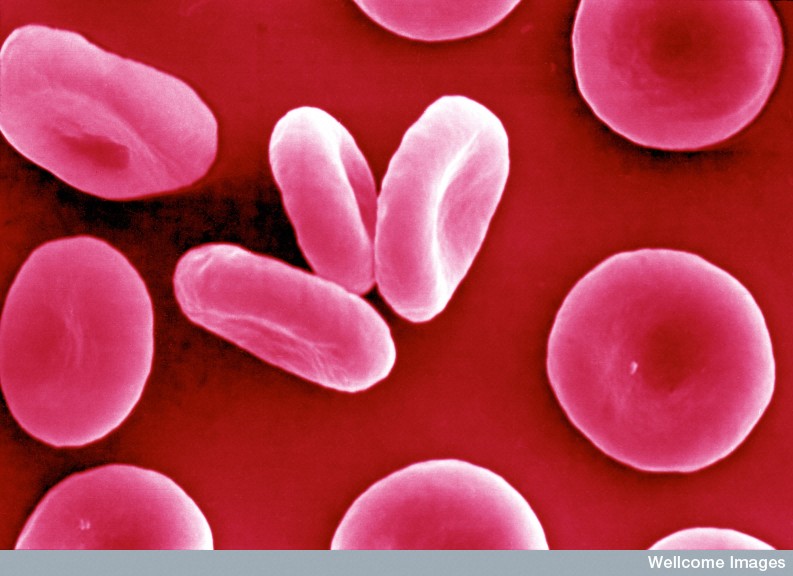Haemoglobin-Haematocrit Relationship in Malaria Study Group
Haemoglobin-Haematocrit Relationship in Malaria Study Group

Assessment of relationship between Haemoglobin (Hb) and Haematocrit (Hct) measurements.
The study group formed in February 2019. Studies meeting essential inclusion criteria were identified from two existing study groups: the 'Falciparum Haematology Study Group” [1] and the Vivax Haematology Study Group [2]. Authors of original studies were invited to contribute to the analysis and authorship of the project.
Anaemia is a well-known complication of malaria and, when severe, a criterion for severe malaria [3]. Anaemia is common in settings where malaria is endemic, especially in vulnerable sub-populations such as young children, individuals suffering of malnutrition and pregnant women [4]. Among children aged 6–60 months, anaemia is defined as a measured haemoglobin (Hb) level of <11g/dl or a haematocrit (Hct) level of <33% [5]. The advantage of measuring Hb over Hct is that Hb directly estimates the blood’s ability to carry oxygen (erythrocyte function) while Hct is an indirect measure [4]. Hb is therefore considered a better indicator of anaemia, but requires a blood counter for its measurement. In resource-limited settings (common in areas with high malaria endemicity), the use of the manual microhaematocrit method has been the mainstay of anaemia diagnosis among children, likely due to a higher cost of using blood counter measurements. Even though a portable HemoCue machine is now available for point-of-care Hb measurement, its use is limited by its higher cost. Both Hb and Hct are used routinely to detect anaemia accurately and assess its severity, and thus a robust method is required for converting Hct to Hb.
One method for deriving Hb is to simply divide the Hct level by 3 to get an equivalent Hb level (three-fold method [6]). However, there have been long-standing concerns that this conversion results in overestimation of Hb leading to the possible under-diagnosis of anaemia and under-assessment of its severity [4,7–10]. Another conversion method has been proposed after a pooled analysis of 3,254 concurrent measurements from 1,810 patients with Plasmodium falciparum malaria (Hct= 5.62 + 2.60*Hb, Lee’s formula) [11]. However, these analyses did not define the effects of covariates such as age, sex, malnutrition, ethnicity, parasitaemia and species in the correction factor [4,9,11]. In addition, the effect of time at which the measurements were taken i.e. pre-treatment compared to the convalescent period, has not been assessed.
The aims of this study are:
- To assess the accuracy of estimating haemoglobin from haematocrit using the two known methods (Lee’s method and three-fold method)
- To determine if the Hb-Hct relationship is affected by pre-defined covariates
- To derive a new conversion formula that can provide robust estimates of haemoglobin from haematocrit accounting for important covariates and to investigate whether this results in improved and clinically relevant accuracy.
- Individual patient data from antimalarial efficacy trials of patients with uncomplicated malaria
- Concurrent Hb and Hct measured at baseline
- Patient demographics (age, gender, weight, admission date)
- Baseline parasitaemia and malaria species
- Study site characteristics: GPS coordinates, transmission intensity estimates
- Parasitaemia measurements after Day 0 and time of sampling
- Concurrent Hb and Hct measurements after Day 0 and time of sampling
Studies meeting essential inclusion criteria will be identified from two existing study groups: the Falciparum Haematology Study Group [1] and the Vivax Haematology Study Group [2]. Authors of original studies will be invited to share data for this analysis, contribute to the analysis and authorship of the project.
All the data sets have already been shared in the WWARN Data Repository (as they have contributed to the previous study groups), standardised and pooled into a single database of quality-assured individual patient data according to the WWARN Clinical Data Management and Statistical Plan [12].
Accuracy of the known estimation methods (three-fold method and Lee’s method) will be evaluated in sub-populations defined by region, age group and other covariates listed above. An optimised formula for the conversion of haematocrit will be developed to account for all significant determinants using generalised estimation equations, and its accuracy will be compared to the existing methods.
A detailed statistical analysis plan will be developed prior to commencing the analysis and will be shared with all contributors.
The Study Group comprises participating investigators who contribute relevant data sets to the pooled analysis. Data included in the Hb-Hct Relationship in Malaria Study Group remain the property of the investigator. The Study Group makes decisions regarding the meta-analysis and plans for publication in line with the WWARN Publication Policy [13]. The Study Group will identify one or two people to coordinate activities including data analysis, and drafting of publications and reports for group review. For further information, email Kasia Stepniewska: kasia.stepniewska@wwarn.org.
1. Haematology Study Group | Worldwide Antimalarial Resistance Network.
2. Vivax Haematology Study Group | Worldwide Antimalarial Resistance Network.
3. World Health Organization. Management of severe malaria - {A} practical handbook. {Third} edition. 2013.
4. Quintó L, Aponte JJ, Menéndez C, Sacarlal J, Aide P, Espasa M, et al. Relationship between haemoglobin and haematocrit in the definition of anaemia. Trop. Med. Int. Health. 2006;11:1295–302.
5. Stoltzfus RJ, Dreyfuss ML. Guidelines for the Use of Iron Supplements to Prevent and Treat Iron Deficiency Anemia.
6. Lewis SM, Barbara JB, Bates I. Dacie and Lewis Practical Haematology. Dacie Lewis Pract. Haematol. Churchill Livingstone/Elsevier; 2006. p. 722.
7. Graitcer PL, Goldsby JB, Nichaman MZ. Hemoglobins and hematocrits: are they equally sensitive in detecting anemias? Am. J. Clin. Nutr. 1981;34:61–4.
8. Keen ML. Hemoglobin and hematocrit: an analysis of clinical accuracy. Case study of the anemic patient. ANNA J. 1998;25:83–6.
9. Carneiro IA, Drakeley CJ, Owusu-Agyei S, Mmbando B, Chandramohan D. Haemoglobin and haematocrit: is the threefold conversion valid for assessing anaemia in malaria-endemic settings? Malar. J. 2007;6:67.
10. Rodríguez-Morales AJ, Sánchez E, Arria M, Vargas M, Piccolo C, Colina R, et al. Haemoglobin and haematocrit: the threefold conversion is also non valid for assessing anaemia in Plasmodium vivax malaria-endemic settings. Malar. J. 2007;6:166.
11. Lee SJ, Stepniewska K, Anstey N, Ashley E, Barnes K, Binh T, et al. The relationship between the haemoglobin concentration and the haematocrit in Plasmodium falciparum malaria. Malar. J. 2008;7:149.
12. Clinical Data Management and Analysis Plan | Worldwide Antimalarial Resistance Network.
13. WWARN. WWARN Publication Policy. (2019).



